-
 Bitcoin
Bitcoin $105,678.5433
3.97% -
 Ethereum
Ethereum $2,438.0085
7.47% -
 Tether USDt
Tether USDt $1.0005
0.00% -
 XRP
XRP $2.1913
8.48% -
 BNB
BNB $640.8349
3.02% -
 Solana
Solana $144.5565
7.67% -
 USDC
USDC $1.0000
0.00% -
 TRON
TRON $0.2728
0.43% -
 Dogecoin
Dogecoin $0.1638
6.23% -
 Cardano
Cardano $0.5855
6.90% -
 Hyperliquid
Hyperliquid $38.1165
9.12% -
 Sui
Sui $2.7823
11.35% -
 Bitcoin Cash
Bitcoin Cash $453.8805
2.07% -
 Chainlink
Chainlink $13.3114
12.02% -
 UNUS SED LEO
UNUS SED LEO $9.1448
0.95% -
 Stellar
Stellar $0.2484
7.25% -
 Avalanche
Avalanche $18.1889
7.53% -
 Toncoin
Toncoin $2.9059
3.39% -
 Shiba Inu
Shiba Inu $0.0...01164
5.99% -
 Hedera
Hedera $0.1520
9.43% -
 Litecoin
Litecoin $84.3123
3.09% -
 Monero
Monero $312.6435
3.72% -
 Ethena USDe
Ethena USDe $1.0006
0.01% -
 Polkadot
Polkadot $3.4586
6.41% -
 Dai
Dai $0.9999
-0.03% -
 Bitget Token
Bitget Token $4.2689
5.09% -
 Uniswap
Uniswap $6.9291
11.61% -
 Pepe
Pepe $0.0...09961
9.42% -
 Pi
Pi $0.5373
6.24% -
 Aave
Aave $261.4523
12.42%
Technical Analysis of Crypto K-line Charts: A Comprehensive Analysis from Basic to Advanced
K-line charts are vital for crypto trading, revealing price action through patterns like hammers, dojis, and engulfing candles, best used with indicators like RSI and volume for confirmation.
Jun 11, 2025 at 02:50 am
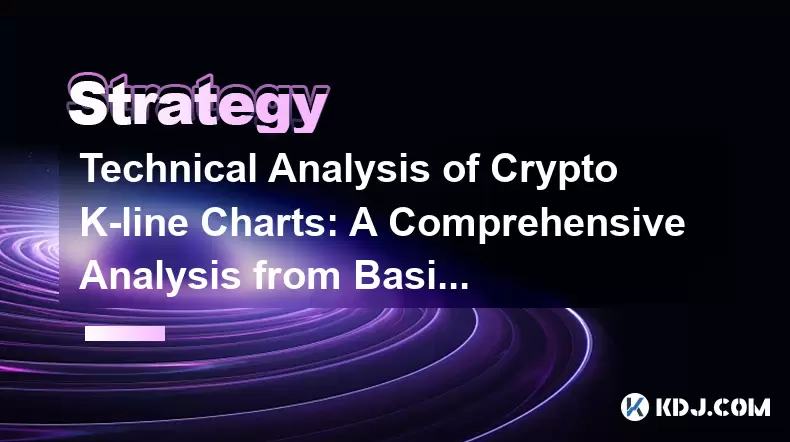
Understanding the Basics of K-line Charts
K-line charts, also known as candlestick charts, are essential tools in the technical analysis of cryptocurrency markets. Each candlestick represents a specific time period and provides four key data points: open, high, low, and close prices. These elements allow traders to interpret market sentiment and potential price movements.
The body of the candlestick shows the range between the open and close. If the close is higher than the open, the body is typically green or hollow; if it's lower, the body appears red or filled. The lines above and below the body, called wicks or shadows, indicate the highest and lowest prices reached during that time frame.
Key Point: Understanding how to read these patterns helps identify reversal signals, continuation trends, and market indecision.
Common Candlestick Patterns in Crypto Trading
Certain candlestick patterns appear frequently in crypto trading and can provide valuable insights into market behavior. One such pattern is the hammer, which usually indicates a potential reversal from a downtrend. It has a small body at the top with a long lower wick.
Another widely recognized formation is the engulfing pattern, where a large bullish or bearish candle completely engulfs the previous candle. This often signals strong momentum in the direction of the engulfing candle.
The doji is another crucial pattern, reflecting market indecision. It forms when the open and close prices are nearly equal, creating a cross-like shape. When this occurs after a significant trend, it may suggest an impending reversal.
- Hammer: Bullish reversal signal after a downtrend
- Shooting Star: Bearish reversal indicator after an uptrend
- Doji: Market uncertainty, potential reversal
How to Combine K-lines with Technical Indicators
Relying solely on K-line patterns can be misleading without confirming signals from other technical indicators. Traders often combine candlestick analysis with tools like Moving Averages (MA), Relative Strength Index (RSI), and Bollinger Bands to increase accuracy.
For example, a bullish engulfing pattern appearing near a key support level while the RSI is in oversold territory (<30) strengthens the probability of a successful trade. Similarly, a shooting star forming at resistance with RSI above 70 suggests a stronger bearish setup.
Important Tip: Always wait for confirmation before entering a trade based on K-line signals alone.
- RSI: Confirm overbought/oversold conditions alongside candlestick patterns
- Moving Averages: Use them as dynamic support/resistance zones
- Volume: High volume during pattern formation increases reliability
Advanced K-line Chart Reading Techniques
Experienced traders use more advanced techniques such as price action zones, multi-timeframe analysis, and confluence zones to enhance their decision-making process. These methods involve analyzing K-lines across different timeframes—such as 1-hour, 4-hour, and daily charts—to find alignment in trend direction.
A confluence zone occurs when multiple technical factors align, such as a key Fibonacci level coinciding with a major candlestick reversal pattern. This increases the likelihood of a successful trade.
Traders also pay attention to wick rejection, where long upper or lower wicks indicate rejection of certain price levels. For instance, repeated rejections at a resistance level with bearish candles suggest a possible breakdown.
- Multi-Timeframe Analysis: Look for alignment across different chart intervals
- Confluence Zones: Combine candlestick patterns with Fibonacci or moving averages
- Wick Rejection: Strong indication of support/resistance strength
Practical Steps to Analyze K-line Charts Effectively
To begin analyzing K-line charts effectively, follow these practical steps:
- Select a Reliable Charting Platform: Use platforms like TradingView or Binance’s native tools
- Identify Key Support and Resistance Levels: Draw horizontal lines where price has historically reacted
- Spot Candlestick Patterns: Look for recognizable formations at critical price zones
- Apply Technical Indicators: Overlay RSI, MA, and volume indicators for confirmation
- Wait for Confirmation Candles: Ensure the pattern completes and is supported by volume
It’s also important to backtest strategies using historical data to understand how they perform under various market conditions. Many traders keep a trading journal to record their observations and refine their approach over time.
Note: Discipline and consistency are vital when interpreting K-line charts. Avoid impulsive decisions based on isolated candlestick signals.
Frequently Asked Questions
Q1: Can K-line charts be used for all cryptocurrencies?
Yes, K-line charts are universally applicable to any tradable asset, including all cryptocurrencies. The interpretation remains consistent regardless of the digital currency being analyzed.
Q2: Are K-line patterns reliable in volatile crypto markets?
While K-line patterns are useful, volatility can sometimes lead to false signals. It’s advisable to combine them with other indicators and analyze multiple timeframes for better accuracy.
Q3: What timeframes are best for reading K-line charts in crypto?
Short-term traders often use 5-minute to 1-hour charts, while swing traders prefer 4-hour to daily charts. The choice depends on individual trading strategies and goals.
Q4: Do professional crypto traders rely heavily on K-line charts?
Many professional traders incorporate K-line charts into their analysis but typically use them alongside other tools such as order flow analysis, volume profiles, and macroeconomic indicators.
Disclaimer:info@kdj.com
The information provided is not trading advice. kdj.com does not assume any responsibility for any investments made based on the information provided in this article. Cryptocurrencies are highly volatile and it is highly recommended that you invest with caution after thorough research!
If you believe that the content used on this website infringes your copyright, please contact us immediately (info@kdj.com) and we will delete it promptly.
- Polymarket Eyes $1B Valuation: Betting Big on Prediction Markets
- 2025-06-24 22:45:13
- Kane Brown and Taylor Lautner: From Real-Life Friends to 'The Token Groomsman'
- 2025-06-24 22:45:13
- Fartcoin, Bitcoin, and Wealth Creation: A New Era of Crypto?
- 2025-06-24 23:05:12
- Sami Sheen's Breast Implant Removal: A Health-First Decision
- 2025-06-24 22:25:12
- BlockDAG's Token Campaign and Pre-Mainnet Growth Attracts Attention
- 2025-06-24 23:45:12
- AERO Eyes: Investor Buy and Whale Accumulation Signals Rally?
- 2025-06-24 23:30:12
Related knowledge
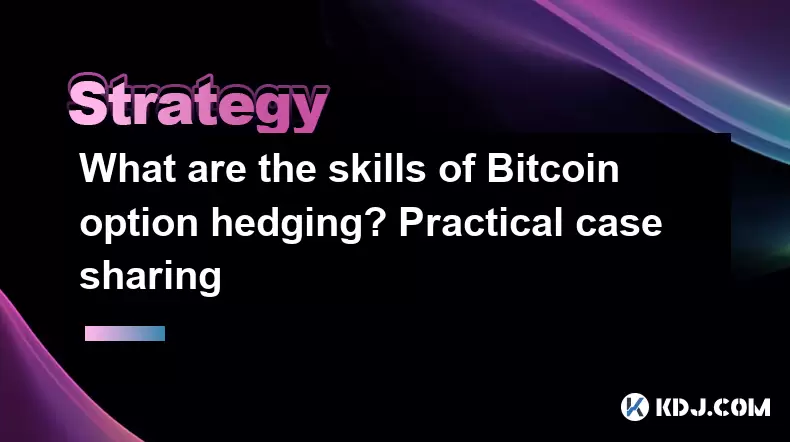
What are the skills of Bitcoin option hedging? Practical case sharing
Jun 24,2025 at 04:01pm
Understanding Bitcoin Option HedgingBitcoin option hedging is a risk management strategy used by traders and investors to protect their positions in the volatile cryptocurrency market. By using options, individuals can limit potential losses while retaining the opportunity for profit. In essence, it allows one to insulate against adverse price movements...
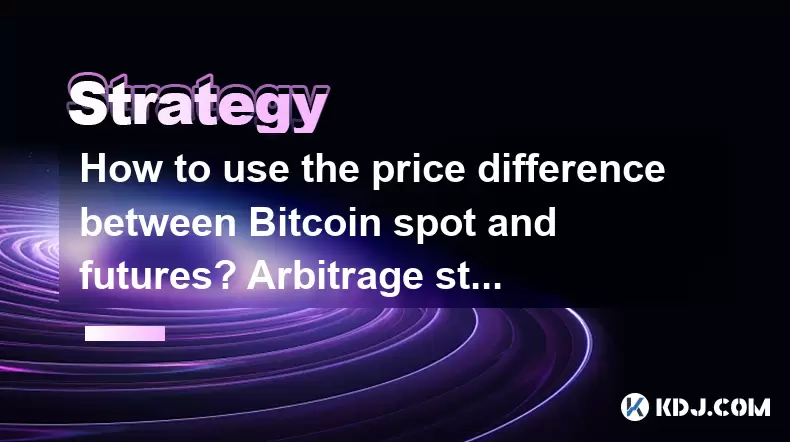
How to use the price difference between Bitcoin spot and futures? Arbitrage strategy
Jun 20,2025 at 02:56pm
Understanding Bitcoin Spot and Futures MarketsTo effectively leverage arbitrage opportunities between Bitcoin spot and futures markets, it's essential to understand the fundamental differences between these two types of markets. The spot market refers to the direct buying and selling of Bitcoin for immediate delivery at the current market price. In cont...
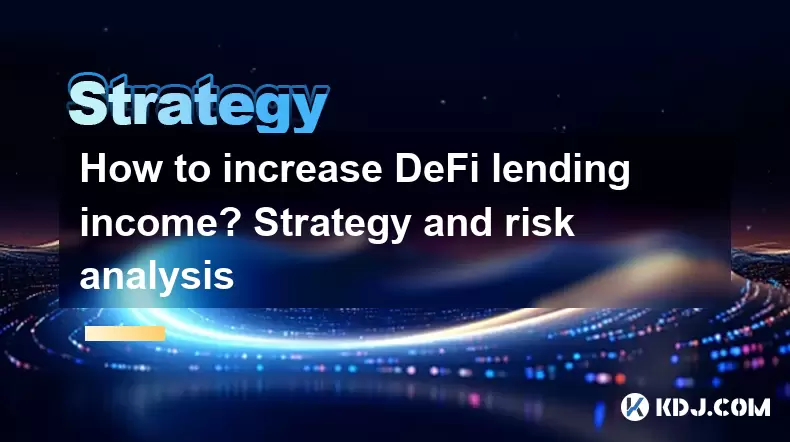
How to increase DeFi lending income? Strategy and risk analysis
Jun 24,2025 at 02:08pm
Understanding DeFi Lending and Its Income PotentialDeFi (Decentralized Finance) lending has emerged as a popular way to earn passive income in the cryptocurrency space. Unlike traditional banking systems, DeFi lending platforms allow users to lend their crypto assets directly to borrowers without intermediaries. The lenders earn interest based on the su...
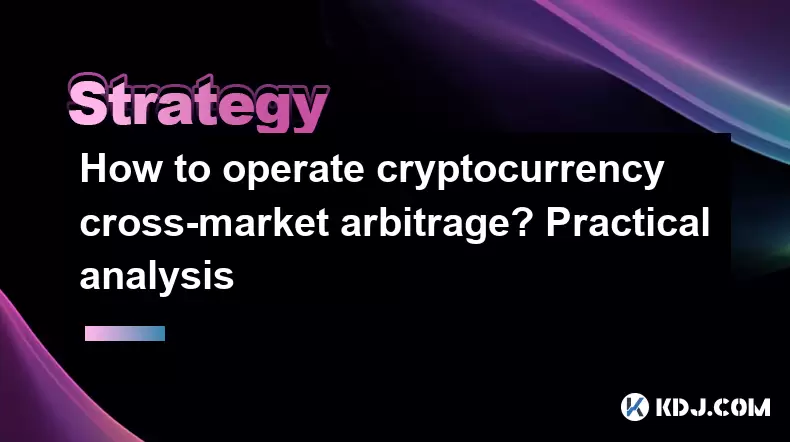
How to operate cryptocurrency cross-market arbitrage? Practical analysis
Jun 23,2025 at 04:01am
Understanding Cryptocurrency Cross-Market ArbitrageCryptocurrency cross-market arbitrage involves taking advantage of price differences for the same digital asset across different exchanges. The core idea is to buy low on one exchange and sell high on another, capturing the profit from the discrepancy. This strategy relies heavily on real-time market da...

How to make profits from high-frequency cryptocurrency trading? Sharing core skills
Jun 19,2025 at 05:07pm
Understanding High-Frequency Cryptocurrency TradingHigh-frequency trading (HFT) in the cryptocurrency market involves executing a large number of trades at extremely fast speeds, often within milliseconds. This method relies on small price discrepancies across exchanges or within a single exchange’s order book. Traders use complex algorithms and ultra-l...

What are the methods of cryptocurrency quantitative trading? Detailed analysis
Jun 22,2025 at 11:07pm
Understanding the Core of Cryptocurrency Quantitative TradingCryptocurrency quantitative trading refers to the use of mathematical models and algorithms to execute trades in the digital asset market. Unlike traditional discretionary trading, which relies heavily on human judgment, quantitative trading leverages data-driven strategies to identify profita...

What are the skills of Bitcoin option hedging? Practical case sharing
Jun 24,2025 at 04:01pm
Understanding Bitcoin Option HedgingBitcoin option hedging is a risk management strategy used by traders and investors to protect their positions in the volatile cryptocurrency market. By using options, individuals can limit potential losses while retaining the opportunity for profit. In essence, it allows one to insulate against adverse price movements...

How to use the price difference between Bitcoin spot and futures? Arbitrage strategy
Jun 20,2025 at 02:56pm
Understanding Bitcoin Spot and Futures MarketsTo effectively leverage arbitrage opportunities between Bitcoin spot and futures markets, it's essential to understand the fundamental differences between these two types of markets. The spot market refers to the direct buying and selling of Bitcoin for immediate delivery at the current market price. In cont...

How to increase DeFi lending income? Strategy and risk analysis
Jun 24,2025 at 02:08pm
Understanding DeFi Lending and Its Income PotentialDeFi (Decentralized Finance) lending has emerged as a popular way to earn passive income in the cryptocurrency space. Unlike traditional banking systems, DeFi lending platforms allow users to lend their crypto assets directly to borrowers without intermediaries. The lenders earn interest based on the su...

How to operate cryptocurrency cross-market arbitrage? Practical analysis
Jun 23,2025 at 04:01am
Understanding Cryptocurrency Cross-Market ArbitrageCryptocurrency cross-market arbitrage involves taking advantage of price differences for the same digital asset across different exchanges. The core idea is to buy low on one exchange and sell high on another, capturing the profit from the discrepancy. This strategy relies heavily on real-time market da...

How to make profits from high-frequency cryptocurrency trading? Sharing core skills
Jun 19,2025 at 05:07pm
Understanding High-Frequency Cryptocurrency TradingHigh-frequency trading (HFT) in the cryptocurrency market involves executing a large number of trades at extremely fast speeds, often within milliseconds. This method relies on small price discrepancies across exchanges or within a single exchange’s order book. Traders use complex algorithms and ultra-l...

What are the methods of cryptocurrency quantitative trading? Detailed analysis
Jun 22,2025 at 11:07pm
Understanding the Core of Cryptocurrency Quantitative TradingCryptocurrency quantitative trading refers to the use of mathematical models and algorithms to execute trades in the digital asset market. Unlike traditional discretionary trading, which relies heavily on human judgment, quantitative trading leverages data-driven strategies to identify profita...
See all articles


























































